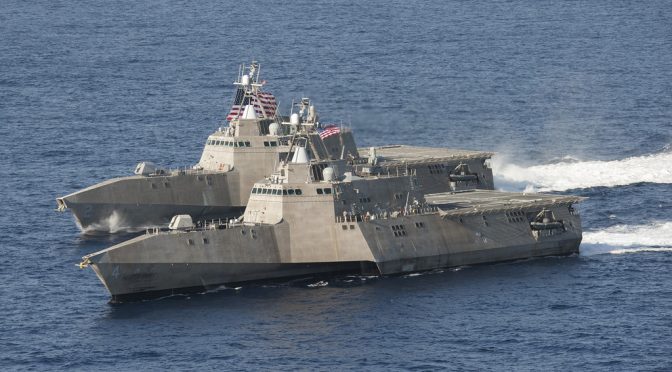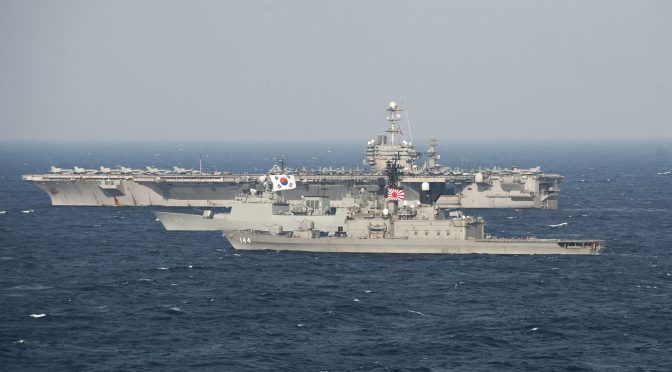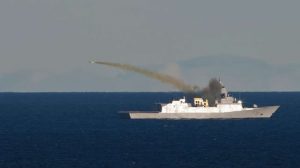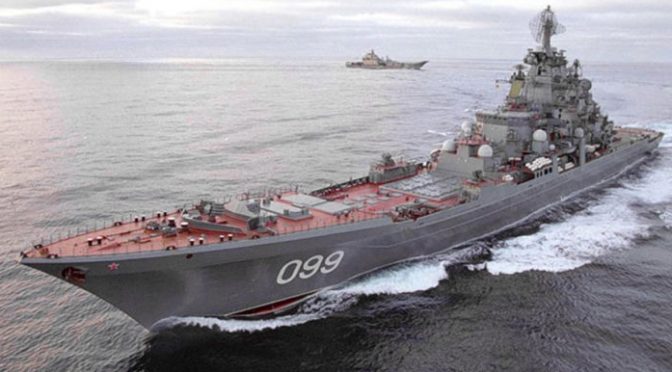By Sam Cohen
Welcome to the June 2016 members’ roundup. Throughout June, CIMSEC members examined several international maritime security issues, including increased competition in the undersea environment, the Taiwanese Navy’s pursuit of an enhanced air defense capability, Russia’s modernization of the Black Sea Fleet, developments in unmanned aerial vehicle (UAV) technology and carrier based operations, and finally, growing piracy threats off the coast of Libya.
Beginning the roundup at the Bulletin of the Atomic Scientists, Bryan Clark discusses undersea cables and the future of submarine competition. Mr. Clark explains how at least 95% of voice and internet traffic in addition to more than $4 trillion per year in financial transactions travels through about 300 transoceanic fiber-optic cables along the seabed. Due to the likely economic and military impacts a cable break or sabotage would induce on international security and economic dynamics, the ability to threaten or protect undersea cables and their shore landings will become an increasingly important aspect of future conflict – with procurement of advanced submarine and unmanned underwater vehicle (UUV) technology being critical for addressing this evolving threat. Mr. Clark highlights several of these technologies, including the rise of a new predominant sensing technology characterized by low-frequency active sonar, the use of undersea ‘battle networks’ and the deployment of fixed seabed-based sensors and outposts to augment UUV and submarine operations.
Harry Kazianis, for The National Interest, provides an analysis on the proliferation of anti-ship ballistic and cruise missiles around the globe and the implications the spread of these weapon systems will have on future U.S. aircraft carrier operations in peace and in conflict. Mr. Kazianis notes that the carrier has been at the forefront of every major U.S. combat operation since World War II, but the short ranges of current carrier based fighter aircraft relative to the longer ranges of certain anti-ship missiles – such as China’s DF-21D, or DF-26 ASBM – may limit the usefulness of the carrier as both an effective deterrent and a reliable platform for power projection in contested areas of operation. The article highlights additional variables affecting the relevance of the flattop in A2/AD environments, including the likelihood of successfully targeting a moving carrier at sea deploying an array of countermeasures.
Ankit Panda, for The Diplomat, provides an overview of a Chinese Naval vessel entering Japanese territorial waters and the incident’s reflection of growing tensions between the two countries. Mr. Panda explains that a Type 815 Dongdiao-class spy ship entered Japanese territorial waters on June 15, a move Beijing has not repeated since 2004, when a Chinese nuclear submarine entered Japan’s 12 nautical mile territorial sea near the Sakishima Islands. The article examines whether the Chinese spy ship was abiding by international law, particularly the provisions governing ‘innocent passage’ under the United Nations Convention on the Law of the Sea. Considering the Chinese vessel was a spy ship and sailed within Japanese waters for several hours, Mr. Panda explains that the Japanese Defense Ministry is investigating whether the PLAN vessel was operating in accordance with international law and if follow-up legal action should be taken.
Michal Thim and his colleague Liao Yen-fan, for Taiwan in Perspective, discuss the restructuring of the Taiwanese Navy, and the goal to acquire enhanced air defense capabilities for the fleet. The authors explain that modernization plans have identified interchangeable Aegis-like integrated combat systems (ACS) that pair powerful radars with advanced anti-air and anti-ship weapons as priority procurement targets. However, the recent breakdown in negotiations between Lockheed Martin and Taiwan’s National Chung-Shan Institute of Science and Technology (NCSIST) over the acquisition and technology transfer of the Mk.41 vertical launch system may limit the Navy’s ability to deploy ACS. They add that this breakdown and the resulting procurement limitations represent inherent challenges associated with Taiwan’s arms indigenization objectives.
To conclude the June members’ roundup, Sam LaGrone for U.S. Naval Institute News provides an overview of Russia’s first deployment of a new frigate to the Black Sea Fleet since the end of the Cold War. The Project 11356-class Admiral Grigorovich was sent to a Russian naval base in Crimea, which Mr. LaGrone explains is the first of many new surface ships the Russian Navy intends to base in the Black Sea. He adds that the delivery of the multi-mission surface combatant, capable of engaging submarine, air and surface threats, is part of a $2.43 billion Black Sea Fleet expansion program that will allow for increased power projection capabilities throughout the Fleet’s area of operation.
Members at CIMSEC were also active elsewhere during the month of June:
- Bryan McGrath, for The War on the Rocks, explains how the lack of naval competition in the post-Cold War period has resulted in a U.S. fleet posture with limited offensive power. He explains how the Navy has prioritized a defensive mindset for too long, with survivability and defensive capabilities outcompeting offensive capabilities for platform space, budgetary resources and strategic inquiry. Mr. McGrath emphasizes that by adopting and implementing the distributed lethality concept across the fleet – that is increasing the unit-level lethality of virtually every ship in the Navy – U.S. naval forces will increase their capacity to successfully deter and challenge nations opposing U.S. interests and international law at sea.
- Jerry Hendrix, for Defense One, advocates that the X-47B should be reinserted into carrier operations before the U.S. Navy begins to spend more time and fiscal resources on a new, expensive carrier-based UAV. Mr. Hendrix identifies that the Navy needs a long-range strike asset similar to the X-47B design, while it does not need a long-range surveillance platform – an asset the Navy seems to be leaning towards even though 68 unmanned MQ-4C Triton broad area maritime surveillance vehicles have recently been acquired. He also notes the possibility of evolving the X-47B into a joint strike-refueling platform, which would provide two useful, additional capabilities aboard the carrier that are more appropriate and necessary than a surveillance UAV.
- Michael McDevitt, for The National Interest, discusses China’s ambitions as a maritime power by contextualizing the maritime environment from Beijing’s perspective. The article examines how China seeks to position itself in the maritime environment both regionally and globally, with the Coast Guard, PLA Navy, shipbuilding capacity, merchant fleet, distant-water fishing challenges, territorial disputes and both strategic and tactical level operations taken into consideration.
- Paul Pryce, at Offiziere, provides an analysis on the current state of the Libyan Navy and the growing threat of piracy operations off of the country’s coastline. Mr. Pryce explains that the Navy’s one active ship, a Koni-class frigate, in addition to the lack of command and control governing the Navy – the same issue facing all Libyan security forces – is contributing to the refugee problem in the Mediterranean and the rising volume in piracy incidents throughout the region.
- Robert Farley, for The National Interest, discusses Canada’s late 1950’s CF-105 Avro Arrow high-performance interceptor and the aircraft’s unsung potential as a dominating platform in early Cold War airspace, if only the program had not been cancelled due to shifts in Canadian technology, policy and security priorities. In a second article at The National Interest, Farley examines Russia’s Type 705 Lyra Cold War submarine that was regarded by the West as a profound threat to NATO’s undersea dominance.
- Christian Davenport, for The Washington Post, highlights new technological advancements that may be transforming the way the pentagon outlines its defense strategy, particularly developments within the fields of robotics, drone swarms, and artificial intelligence. The article highlights emerging communication channels between the technology industry in Silicon Valley and the Pentagon, with Defense Secretary Ashton B. Carter recently meeting with executives at SpaceX and Google.
- Kyle Mizokami, for Popular Mechanics, discusses the deployment of two U.S. carrier battle groups to the Philippine Sea to conduct exercises following the UN court ruling on China and its claims in the South China Sea. Mr. Mizokami explains that the carrier strike groups (CSGs) consist of two nuclear-powered aircraft carriers, two guided-missile cruisers, six guided-missile destroyers and likely two nuclear attack submarines – although their presence was not confirmed by the Navy. He adds that this is the first two-carrier exercise in the Western Pacific in two years.
- Dave Majumdar, for The National Interest, examines the Russian submarine threat to NATO’s maritime forces and U.S. naval forces stationed throughout Europe. The article explains how Russia has successfully incorporated highly agile, technologically advanced and lethal submarines into their overall A2/AD bubble strategy throughout European waters and the significant threat this poses to U.S. and allied undersea posture in the region.
At CIMSEC we encourage members to continue writing, either here on CIMSEC or through other means. You can assist us by emailing your works to dmp@cimsec.org.
Sam Cohen is currently studying Honors Specialization Political Science at Western University in Canada. His interests are in the fields of strategic studies, international law and defense policy.
Featured Image: Naval vessels of Russia’s Black Sea Fleet (RT)





